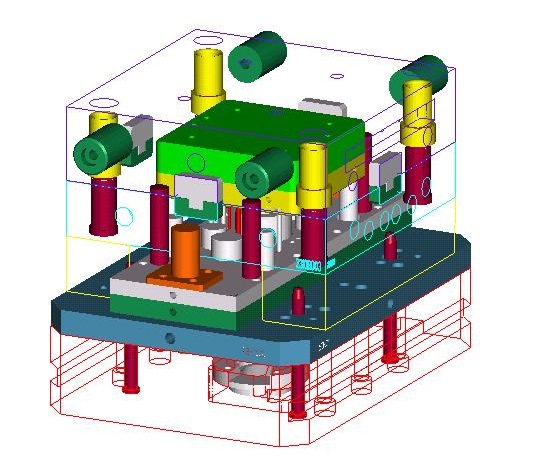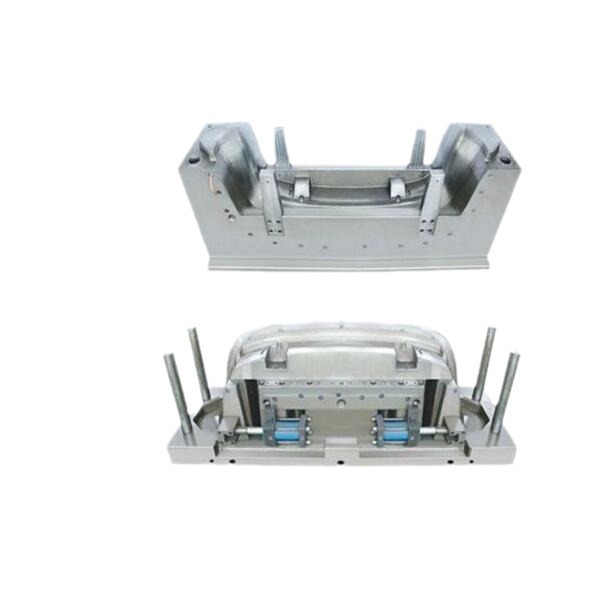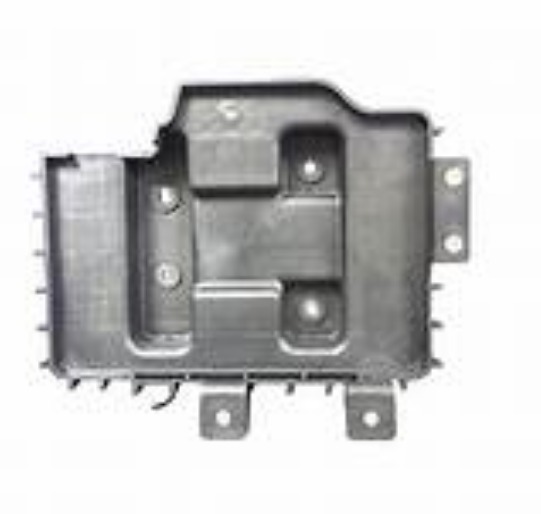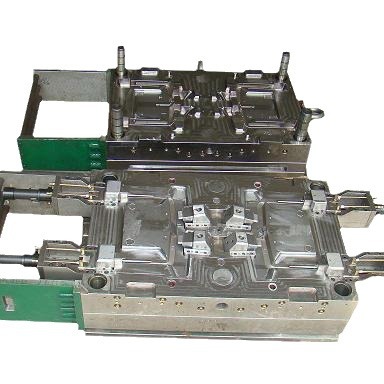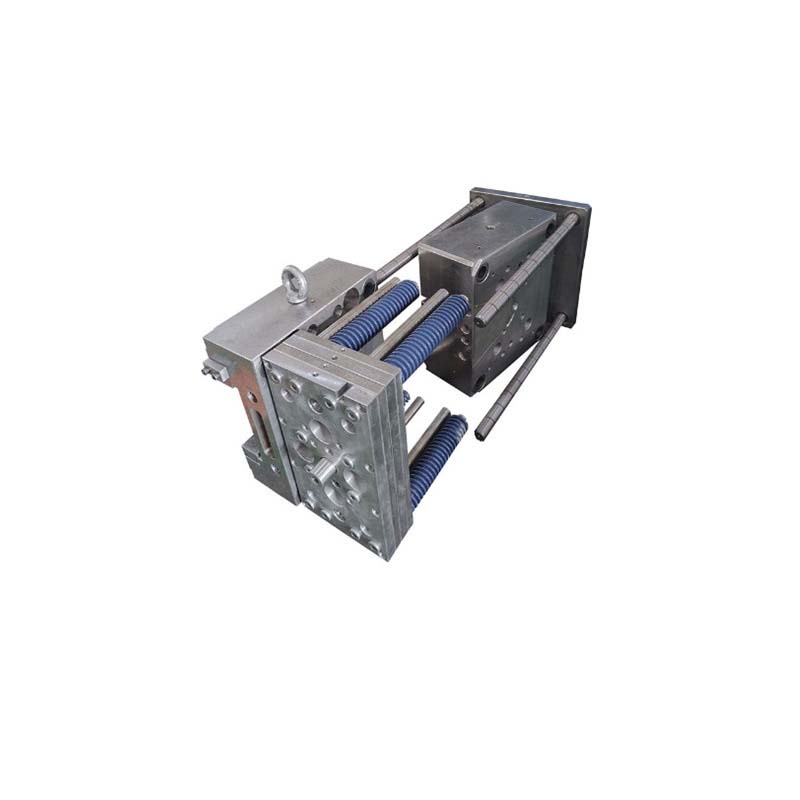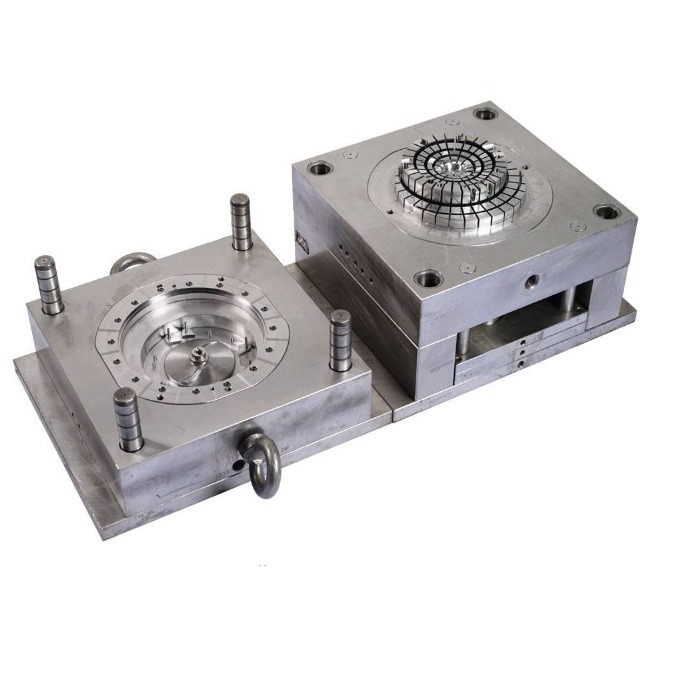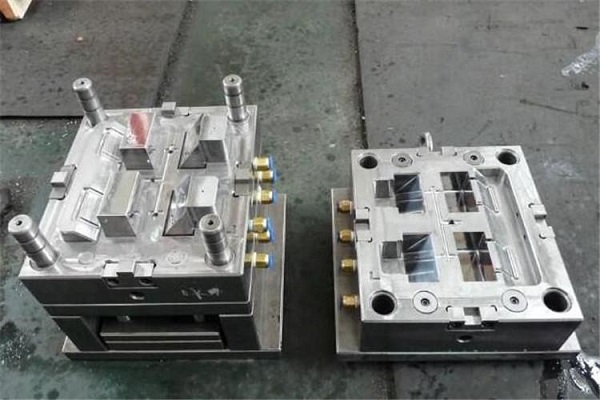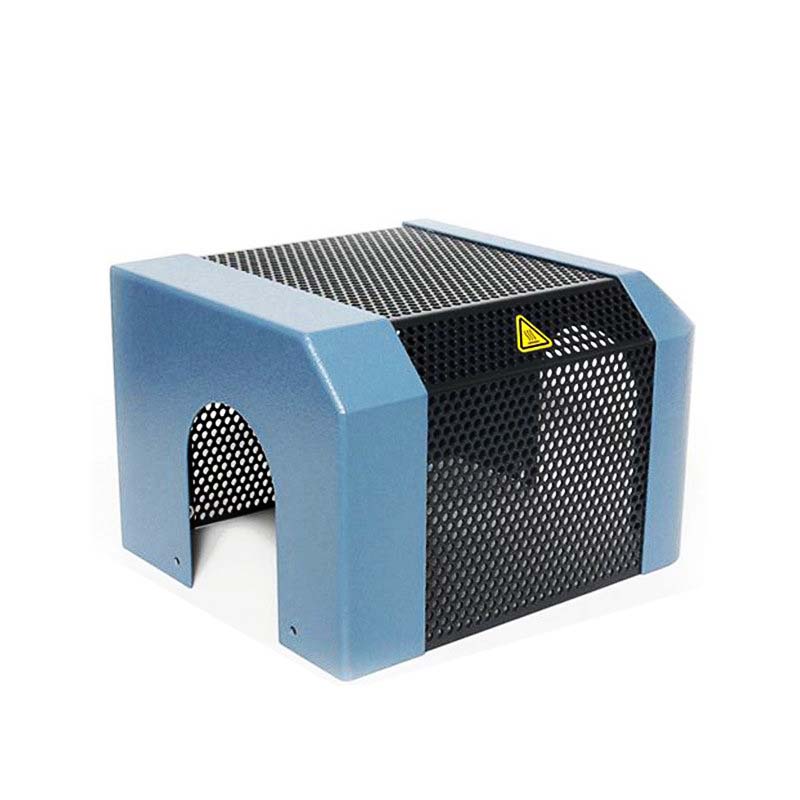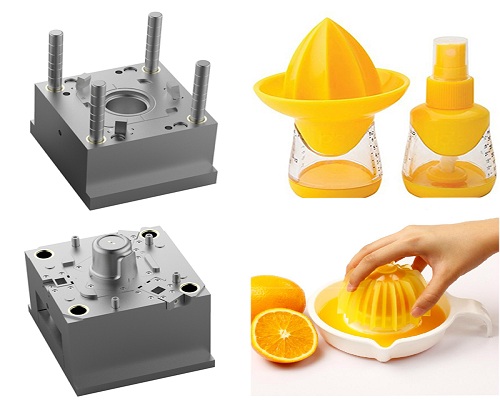Introduction
Definition and Basics of High - speed Cutting
High - speed cutting, also known as high - speed machining, is a machining process that involves using cutting tools at much higher rotational speeds and feed rates compared to traditional machining methods. The exact definition of high - speed cutting can vary depending on the material being processed and the type of cutting operation. Generally, for metal cutting, high - speed cutting often starts when the cutting speed reaches several hundred meters per minute or even higher.
The basic principles of high - speed cutting are centered around the efficient removal of material. When the cutting speed increases, the heat generated during the cutting process is mainly carried away by the chips, reducing the heat - affected zone on the workpiece surface. This is because the high - speed cutting process shortens the time the cutting tool is in contact with the workpiece, minimizing the heat transfer to the workpiece.
In the context of injection mold processing, high - speed cutting has become an increasingly popular and important technique. Injection molds are complex tools used to create plastic products, and their quality directly affects the quality of the final plastic parts. High - speed cutting offers several distinct advantages over traditional machining methods in the production of injection molds, which we will explore in detail in the following sections.
1. Enhanced Productivity
Higher Material Removal Rate
One of the most significant advantages of high - speed cutting in injection mold processing is the substantially higher material removal rate. In traditional cutting methods, the material removal rate is relatively limited. However, high - speed cutting can increase the metal removal rate by 30 - 40% compared to traditional machining.
For example, when processing steel materials for injection molds, traditional milling might remove a certain volume of material per minute. But with high - speed cutting, the spindle speed can be increased from, say, 5000 RPM in traditional milling to 20000 RPM or more in high - speed milling. Coupled with a higher feed rate, the amount of material removed per unit time is greatly enhanced. This means that in the same period, more material can be removed, which is crucial for large - scale injection mold production where large amounts of raw material need to be shaped into complex mold structures.
Reduced Machining Time
High - speed cutting also leads to a remarkable reduction in machining time. Thanks to its high spindle speeds and rapid feed rates, it can shorten the time required for each machining operation, including roughing, semi - finishing, and finishing.
Take the processing of a complex injection mold with intricate 3D contours as an example. In traditional machining, the roughing process might take 10 hours, the semi - finishing another 8 hours, and the finishing 5 hours, resulting in a total machining time of 23 hours. But when high - speed cutting is employed, due to its ability to use larger feed rates and higher spindle speeds, the roughing time can be reduced to 6 hours, the semi - finishing to 5 hours, and the finishing to 3 hours. This brings the total machining time down to 14 hours, a reduction of about 39%. Such a significant reduction in machining time not only accelerates the production cycle but also allows manufacturers to take on more orders and increase their overall productivity, giving them a competitive edge in the market.
2. Superior Quality of Molds
Improved Surface Finish
High - speed cutting can significantly improve the surface finish of injection molds. When the cutting speed increases, the cutting force per unit area decreases, and the surface roughness of the workpiece is reduced. This is because at high - speed cutting, the cutting process becomes more stable, and the generation of surface defects such as burrs and scratches is effectively suppressed.
The following table shows the comparison of surface roughness data between high - speed cutting and traditional cutting for mold processing:
| Cutting Method | Surface Roughness (Ra, μm) |
| Traditional Cutting | 3.2 - 6.3 |
| High - speed Cutting | 0.8 - 1.6 |
As can be seen from the table, the surface roughness of the mold processed by high - speed cutting is much lower than that of traditional cutting. A better surface finish means that the injection mold has a smoother surface, which is beneficial for the demolding of plastic products. In the injection molding process, a smooth mold surface can reduce the friction between the plastic part and the mold, prevent the plastic part from being scratched during demolding, and improve the surface quality of the final plastic product. Moreover, a lower - roughness surface can also reduce the need for subsequent polishing processes. Polishing is a time - consuming and labor - intensive operation. By reducing the polishing process, not only can production efficiency be improved, but also production costs can be saved.
Precise Dimensional Accuracy
In high - speed cutting, due to the small cutting force and reduced heat - affected zone, the thermal deformation of the workpiece is minimized, which ensures the precise dimensional accuracy of the injection mold. When the cutting force is small, the stress on the workpiece during processing is reduced, and the elastic - plastic deformation of the workpiece caused by the cutting force is also reduced. At the same time, because the heat generated during high - speed cutting is mainly carried away by the chips, the temperature rise of the workpiece is small, and the thermal expansion and contraction of the workpiece are also minimized, thus ensuring the stability of the workpiece's dimensions.
For example, in the processing of precision electronic injection molds, the dimensional accuracy requirements are extremely high. The size deviation of some key parts of the mold needs to be controlled within ±0.01mm. Traditional cutting methods are often difficult to meet such high - precision requirements due to relatively large cutting forces and heat - induced deformations. However, high - speed cutting technology can well meet these requirements. It can accurately machine the complex shapes and fine structures of precision electronic injection molds, ensuring that the molds have excellent dimensional accuracy. This high - precision mold can produce high - quality plastic parts for electronic products, ensuring the performance and reliability of electronic products, such as the precise fit of components in mobile phone casings and the accurate connection of internal components in precision electronic devices.
3. Extended Tool Life
Lower Cutting Forces
In high - speed cutting for injection mold processing, the cutting forces are significantly reduced. Research shows that the cutting force in high - speed cutting can be 30% lower than that in traditional cutting methods. This is mainly due to the fact that at high - speed cutting, the chip formation mechanism changes. When the cutting speed increases, the shear angle in the chip - forming area becomes larger, and the deformation coefficient of the chip decreases. As a result, the force required to separate the chip from the workpiece is reduced.
Lower cutting forces have a direct and positive impact on tool life. With less force acting on the tool, the wear on the tool's cutting edge is greatly reduced. In traditional injection mold processing, high cutting forces can cause the tool edge to experience excessive stress, leading to rapid wear, chipping, and even breakage of the tool. For example, when using a traditional milling cutter to machine an injection mold made of hardened steel, the high cutting force may cause the carbide particles on the tool surface to gradually fall off due to the strong mechanical impact, reducing the tool's cutting performance and lifespan. However, in high - speed cutting, the lower cutting force can keep the tool edge in a relatively stable state, delaying the occurrence of such wear phenomena. This not only extends the tool life but also reduces the frequency of tool replacement, thereby lowering the overall tool - related costs in injection mold processing.
Reduced Heat Generation
Another key factor contributing to the extended tool life in high - speed cutting is the reduced heat generation. During high - speed cutting, a large proportion (about 80 - 90%) of the heat generated during the cutting process is carried away by the chips. This is because the high - speed movement of the cutting tool shortens the contact time between the tool and the workpiece, and most of the heat generated by the plastic deformation of the workpiece during cutting is transferred to the chips that are quickly removed.
We can clearly see that at high - speed cutting speeds, the growth rate of tool wear is much slower. In traditional cutting, a significant amount of heat accumulates on the tool surface, leading to thermal softening of the tool material. This thermal softening reduces the hardness and wear - resistance of the tool, accelerating tool wear. For instance, when using a high - speed steel tool in traditional cutting of injection mold materials, the high temperature on the tool surface can cause the alloying elements in the high - speed steel to diffuse, reducing the tool's hardness and making it more susceptible to wear. In high - speed cutting, since most of the heat is taken away by the chips, the tool temperature remains relatively low, effectively reducing thermal wear and thus significantly extending the tool's service life.
4. Cost - effectiveness
Lower Labor and Equipment Costs
High - speed cutting can lead to significant savings in labor and equipment costs in injection mold processing. Since high - speed cutting increases the productivity by reducing machining time, fewer man - hours are required to complete the same amount of work. This means that the labor cost per mold is decreased.
Take a medium - sized mold manufacturing factory as an example. Before adopting high - speed cutting technology, it took 5 skilled workers 3 days to complete the machining of a set of injection molds, with each worker's daily wage being \(200. So the total labor cost was \)5\times3\times200 = \(3000. After introducing high - speed cutting, the machining time was reduced to 2 days, and only 4 workers were needed. Now the total labor cost is \)4\times2\times200 = \(1600. This shows a reduction of \)1400 in labor cost per mold.
In terms of equipment, because high - speed cutting can complete the processing of injection molds more quickly, the usage time of machining equipment is reduced. For instance, a CNC milling machine used for injection mold processing costs \(50 per hour to operate. If the processing time of a mold is reduced from 30 hours in traditional cutting to 20 hours in high - speed cutting, the equipment - operating cost is reduced by \)(30 - 20)\times50=$500 per mold.
Fewer Post - processing Steps
High - speed cutting improves the quality of injection molds, which in turn reduces the need for post - processing steps, thereby saving costs. In traditional injection mold processing, due to relatively poor surface finish and dimensional accuracy, extensive post - processing operations such as polishing, grinding, and re - machining are often required.
According to industry statistics, in traditional injection mold processing, post - processing costs can account for about 30 - 40% of the total processing cost. This significant reduction in post - processing costs is a major cost - effectiveness advantage of high - speed cutting in injection mold processing.
Yigu Technology's Perspective
High - speed Cutting in Injection Mold Processing
As a non - standard plastic metal products custom Supplier, Yigu Technology deeply understands the significance of high - speed cutting in injection mold processing. High - speed cutting has become an essential technology in our production process, enabling us to meet the high - quality and high - efficiency demands of our customers.
In our practical application, high - speed cutting has brought remarkable results. For example, in the production of some complex injection molds, the application of high - speed cutting technology has reduced the processing time by nearly 40%, while significantly improving the surface finish and dimensional accuracy of the molds. This not only shortens our production cycle but also enhances the competitiveness of our products in the market.
The extended tool life brought by high - speed cutting also reduces our production costs. With lower tool - replacement frequencies, we can allocate more resources to other aspects of production, such as R & D and quality control.
We highly recommend high - speed cutting technology to our customers. It can not only ensure the quality of injection molds but also improve production efficiency and reduce costs. Yigu Technology is committed to continuously exploring and applying advanced technologies like high - speed cutting to provide better - quality products and services to our customers.
